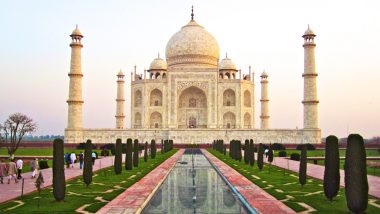New Delhi, May 9: The Supreme Court today came down heavily on the Archeological Survey of India for its failure to take appropriate steps to protect and preserve of the iconic Taj Mahal.
The apex court also expressed concern over the historic monument being infected by insects and asked the authorities, including ASI, what steps they have taken to prevent this.
"This situation would not have arisen if the ASI would have done its job. We are surprised with the way the ASI is defending itself. You (Centre) please consider if the ASI is needed there or not," a bench of Justices M B Lokur and Deepak Gupta told Additional Solicitor General ANS Nadkarni, who was appearing for the Centre.
Nadkarni told the bench that the Ministry of Environment and Forests (MoEF) was considering the apex court's suggestion to appoint international experts to look into the issue of protection and preservation of Taj Mahal.
The counsel for ASI told the court that the problem of insects was due to stagnation of the water of river Yamuna. The top court has been monitoring developments in the area to protect the monument, built by Mughal emperor Shah Jahan in the memory of his wife Mumtaz Mahal in 1631. The mausoleum is a UNESCO World Heritage Site.
The apex court had on May 1 expressed concern over the changing colour of the Taj Mahal apparently due to pollution and rapped the government saying "perhaps you don't care".
Observing that the monument had earlier turned yellow and was now going brownish and greenish in colour, the apex court had pulled up the authorities for not taking appropriate steps to preserve and protect it.
It had asked the Centre to take the assistance of experts from India and abroad to first assess the damage and take steps to restore the 17th-century white marble mausoleum.
While perusing the recent pictures, shown by petitioner and environmentalist M C Mehta, the bench had observed, "this is now becoming the eighth wonder of the world".
The petitioner had said the authorities have not complied with the apex court's directions due to which the condition of the monument has become "horrible".
He had said that besides the change in its colour, there were patches on the marbles and recently a minaret had also fallen down. The bench had observed that heads of countries and several dignitaries, including the Canadian Prime Minister, visiting India go to see the Taj and the court assumes that the authorities would want to preserve it.
The petitioner had told the bench that Taj Mahal was in "shambles", Yamuna water in Agra has finished, the apex court orders were being flouted and encroachments and even industries have come up there.
He had also raked up the issue of security in Taj Mahal and said that CCTV cameras were not working and alleged that the "Government of India and the state government was not doing anything except making money from the monument".
In March this year, the apex court had asked Uttar Pradesh government to place before it a draft of vision document on protection and preservation of the Taj and the environment in the Taj Trapezium Zone, which is an area of about 10,400 sq km spread over the districts of Agra, Firozabad, Mathura, Hathras and Etah in Uttar Pradesh and Bharatpur in Rajasthan.













 Quickly
Quickly


